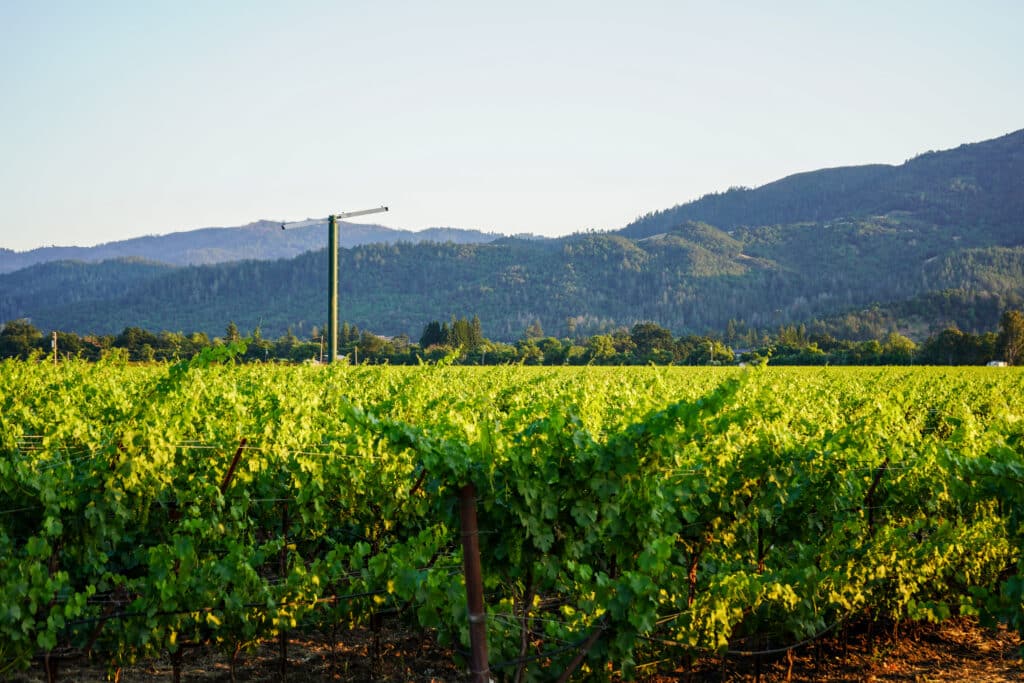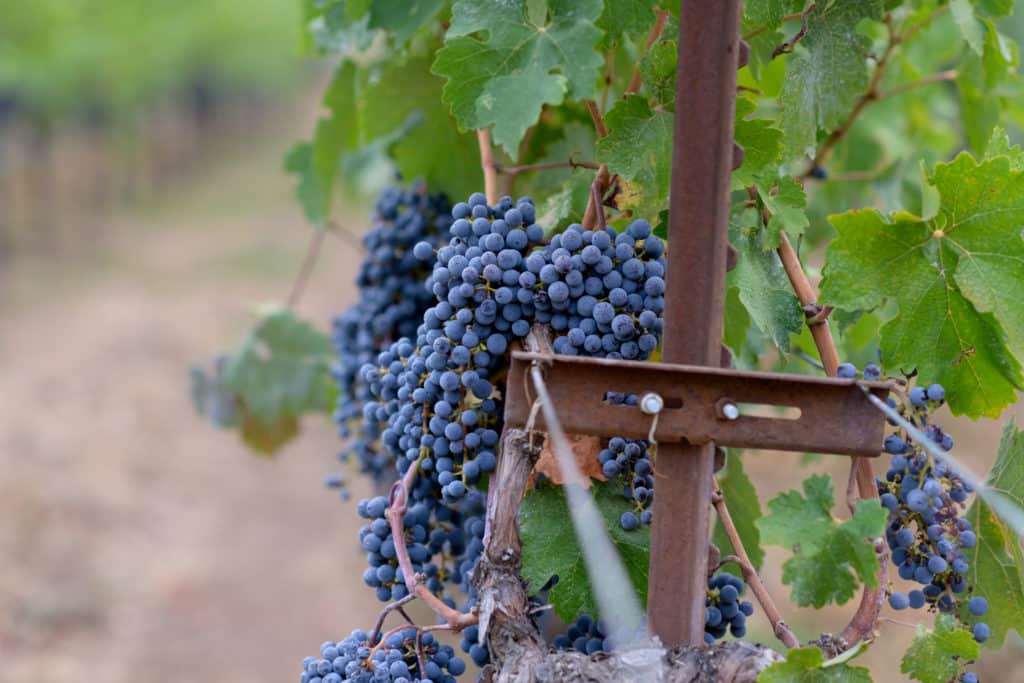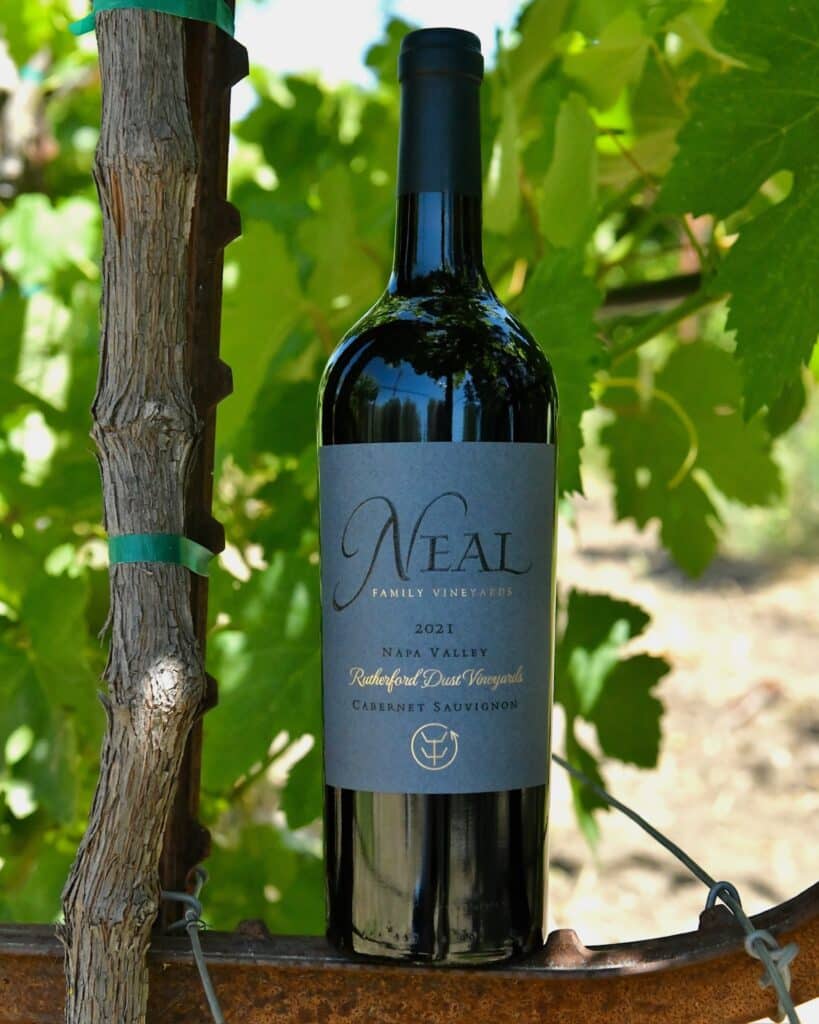Nestled in the heart of Napa Valley, Rutherford is celebrated for its distinctive terroir, which plays a pivotal role in producing some of the world’s finest wines. Rutherford has always been about the soil, vineyards and authentic wines. The coined phrase “Rutherford Dust“, recognized worldwide and associated with Rutherford region, is credited to Andre Tchelistcheff. The region’s unique soil, often referred to as “Rutherford Dust,” is a blend of gravel, loam, sand, and volcanic deposits. This specific composition of soil not only imparts a unique character to the wines as well as significantly influences the growth and health of the vines.
Rutherford is geographically positioned in the center of the Valley. Rutherford’s Viticultural Area spans six square miles and is divided into three sub-zones, flanked by the Vaca Mountains to the east and Mount St. John to the west, totaling 6,840 acres. The boundaries of the Rutherford AVA were formed in 1994. Within the Rutherford AVA are vineyards, the wine, and the wineries of Rutherford. Rutherford has always been about the soil, vineyards and authentic wines. The “new unsettled” phrase “Rutherford Dust” by wine writers states it was said first by either Andre Tchelistcheff or Maynard Amerine. This is new to me as I always heard that Andre Tchelistcheff was the one with this one liner.
Alongside my father, we started working for Joe Heitz. He first worked under winemaking legend André Tchelistcheff who once said, “It takes Rutherford Dust to grow great Cabernet Sauvignon.”
And that phrase—Rutherford Dust—is today a well-known descriptor of Napa Valley’s Rutherford AVA.
The alluvial dust gets kicked up by the farm worker, viticulturist and winemakers and lands on the grapes during late summer to harvest as they tend the vineyards.
Like any other AVA, Rutherford is not uniform and, in fact, is home to a variety of soil series, micro-climates, and topography that impacts the grapes grown and wine styles produced are characterized by the sense of place. Growers have planted primary Cabernet Sauvignon in Rutherford, but today there are many other varieties growing in this small region. One is our Rutherford Dust Vermentino.
It is a combination of complex environmental factors that create this distinct quality, including the maritime influence blown in from the Bay to the South, influencing the overall climate. Rutherford’s temperatures are consistently cooler than AVAs to the north but warmer than those to the south during the summer growing season. With client change this is continually being affected.
The region also experiences more overall sun exposure than others in the Valley, as it is “located at Napa Valley’s widest point.” According to UC Davis, Rutherford is categorized as Region II, clocking over 3,000 growing degree days. It also receives a significant diurnal shift of about 12°F during that same time, ensuring good acid retention whilst achieving full phenolic ripeness.


Rutherford Dust Society notes that Rutherford is relatively flat; elevation does not exceed more than 500 feet at its highest point. But talk to any vintner farming the area, and those undulating hills will inform everything from varietal and clonal choices to trellising and vine-row orientation decisions based on the specific altitude, aspect, and of course soil composition.Nestled in the heart of Napa Valley, Rutherford AVA is celebrated for its distinctive terroir, which plays a pivotal role in producing some of the world’s finest wines. The region’s unique soil, often referred to as “Rutherford Dust,” is a blend of gravel, loam, sand, and volcanic deposits. This specific composition of soil not only imparts a unique character to the wines but also significantly influences the growth and health of the vines.
“It’s an apt descriptor, as there is an undeniably ‘dusty’ characteristic to the ancient, mineral-rich soils of Rutherford, which were formed millions of years ago and spread out from the hills as alluvial fans,” says Lauren Pesch, president of the Rutherford Dust Society (RDS)
Rutherford Dust is renowned for its excellent drainage capabilities. The gravel and sand components ensure that water does not linger around the roots, preventing rot and promoting deep root systems. These deep roots allow vines to access essential nutrients and minerals from the subsoil, contributing to the complexity and depth of the wines. The loam provides enough water retention to sustain the vines during dry periods, striking a perfect balance that results in optimal grape development.
The soil’s unique characteristics lend a signature profile to Rutherford wines, particularly the Cabernet Sauvignon for which the region is famous. Wines from this area are often described as having a rich, earthy flavor with hints of cocoa powder and fine-grained tannins. This distinctive flavor profile, often referred to as “Rutherford Dust,” has become synonymous with excellence in the wine community.
In addition to enhancing flavor, the soil’s properties also influence the structure and age-worthiness of wines made in the Rutherford AVA. The well-drained soil stresses the vines just enough to produce smaller, more concentrated grapes, which are essential for making robust and complex wines that can age gracefully. The mineral-rich subsoil adds to the tannic structure and depth, allowing the wines to develop and improve over time.
As a result, the Rutherford AVA remains a distinguished name in the world of wine, celebrated for its exceptional terroir and the remarkable wines it produces. We are proud to organically farm and produce organic wines from our Rutherford Dust properties.
Our Rutherford Dust property obtained Regenerative Organic Certification in 2023. Having farmed organically beyond 1960’s from a second generation farmer who farmed organically. When my parents purchased the vineyard 1966 from Satitmo Dal Porto we continued to farm in the same method. We have always put the health and quality of the soil first and this has led to producing award-winning wines.
The legacy of our Rutherford Dust Vineyards continues to be upheld by understanding and respecting the importance of the soil. We leverage the unique terroir to craft wines that not only capture the essence of Rutherford but also set benchmarks for quality and style.
“Both of our vineyards have been organically farmed since 1966 and have been certified organic by CCOF since 1984. My parents purchased the property on Mee Lane in 1966, and the original vineyard included Sauvignon Vert, Napa Gamay, Carignan, and French Colombard. In 1971, we removed a four-acre walnut orchard on the property and planted Zinfandel and Petite Syrah, which continue to be farmed today. Although the varietals have evolved over time and most wines produced today are Cabernet Sauvignon, these vineyards have always been our testing ground for new ideas in farming practices and varietals.”
The History
The area first gained renown in 1939 when Georges de Latour received a gold medal at the Golden Gate International Exposition for his 1936 Beaulieu Vineyard Cabernet Sauvignon. This award-winning wine was crafted by Joseph Ponti, who not only managed winemaking but also oversaw vineyard crews, managed the cellar, and even handled some bookkeeping.
One of the more unusual aspects about Rutherford is that it has a higher radiant value than other parts of Napa Valley, meaning that because the area’s location is at Napa Valley’s widest point, it spends more time in the sun. One of the more unusual aspects about Rutherford is that it has a higher radiant value than other parts of Napa Valley, meaning that because the area’s location is at Napa Valley’s widest point, it spends more time in the sun. Those warm days give way to cool evenings, a fluctuation that allows fruit to ripen at a steady pace.
In 1838, An 11,814-acre land grant called, “Rancho Caymus” was gifted to George C. Yount by Mexican General Mariano G. Vallejo as a repayment for a variety of services.
Elizabeth Yount, one of George Yount’s three daughters, married Thomas Rutherford and received 1,040 acres at the Northern end of Yount’s land grant.
The first local grapes were planted in Rutherford by Thomas Rutherford in the middle of the 19th century. This began the illustrious history of the Rutherford Wineries. The region, named after Thomas Rutherford, who contributed greatly to the development and farming of the region.
The railroad from Napa to St. Helena was completed in 1868, and the Rutherford Station was erected which still stands today. History buffs say the reason for the station was to spare the Yount family from long, bumpy carriage rides when they visited Elizabeth from San Francisco. When George Yount died, the remaining pieces of land were sold off to other parties, including Georges de Latour.
Georges de Latour, a French immigrant whose first successful venture in the Napa Valley was a cream of tartar business, and his wife, Fernande, purchased a 4-acre parcel of land adjacent to Niebaum’s Inglenook which they called Beaulieu, meaning “beautiful place.”
“The St. Helena Star noted in October 1911, ‘When it comes to quality, California is greatly indebted to Mr. G. de Latour, of Rutherford, who for some years has imported hundreds of thousands of the choicest French grafted vines, which have been planted in all the important vineyards of the State.’ De Latour planted his vineyards with imported rootstock from France, resistant to Phylloxera.” – Rutherford Dust Society
While many vineyards fell victim to prohibition, Latour continued to operate by producing wine for churches. The 1936 Georges de Latour Private Reserve, released in 1941, was the first wine to be globally recognized as a premier cru-level bottling. It marked Napa Valley and California’s first intentionally varietal Cabernet Sauvignon to achieve international acclaim. This success paved the way for Napa Valley, particularly Rutherford, to specialize in Bordeaux-type wines. Georges de Latour Private Reserve continues to be a benchmark of style and quality in California wine.
Rutherford today consists of a Post Office, Volunteer Firehouse that Mark was involved with for 20 years, Luna Market, Restaurant Rutherford Grill and hotel Rancho Caymus Inn. The old railroad stops and the nursery school.
Neal Family Rutherford Dust Vineyards
Our Rutherford Dust Vineyards, two parcels separated by one County Road, Mee Lane. These two vineyards that have been in the family since 1966, and both have been restored to the Dual Trellis Varietal System. The innovation of the Dual Trellis Varietal System originated from a planting in 1997 of about two acres.
Today, we have 15 acres which surpasses one of the most environmentally-certified vineyards in the world. Fitting in with our ecosystem farming methods of Certified Organic, Biodynamic Certified and Regenerative Organic Certified, it also brings in one of the highest returns of absorbing emissions along with photosynthesis through the sheer volume of canopy masses and return to the roots and soil Carbon Sink.

